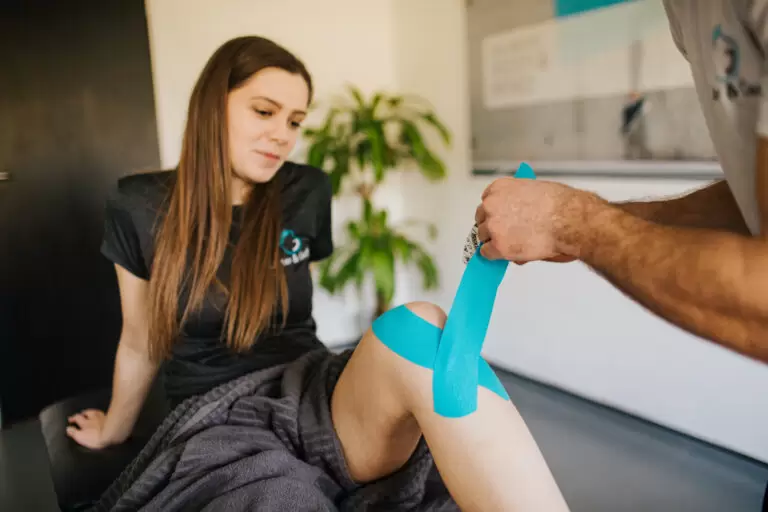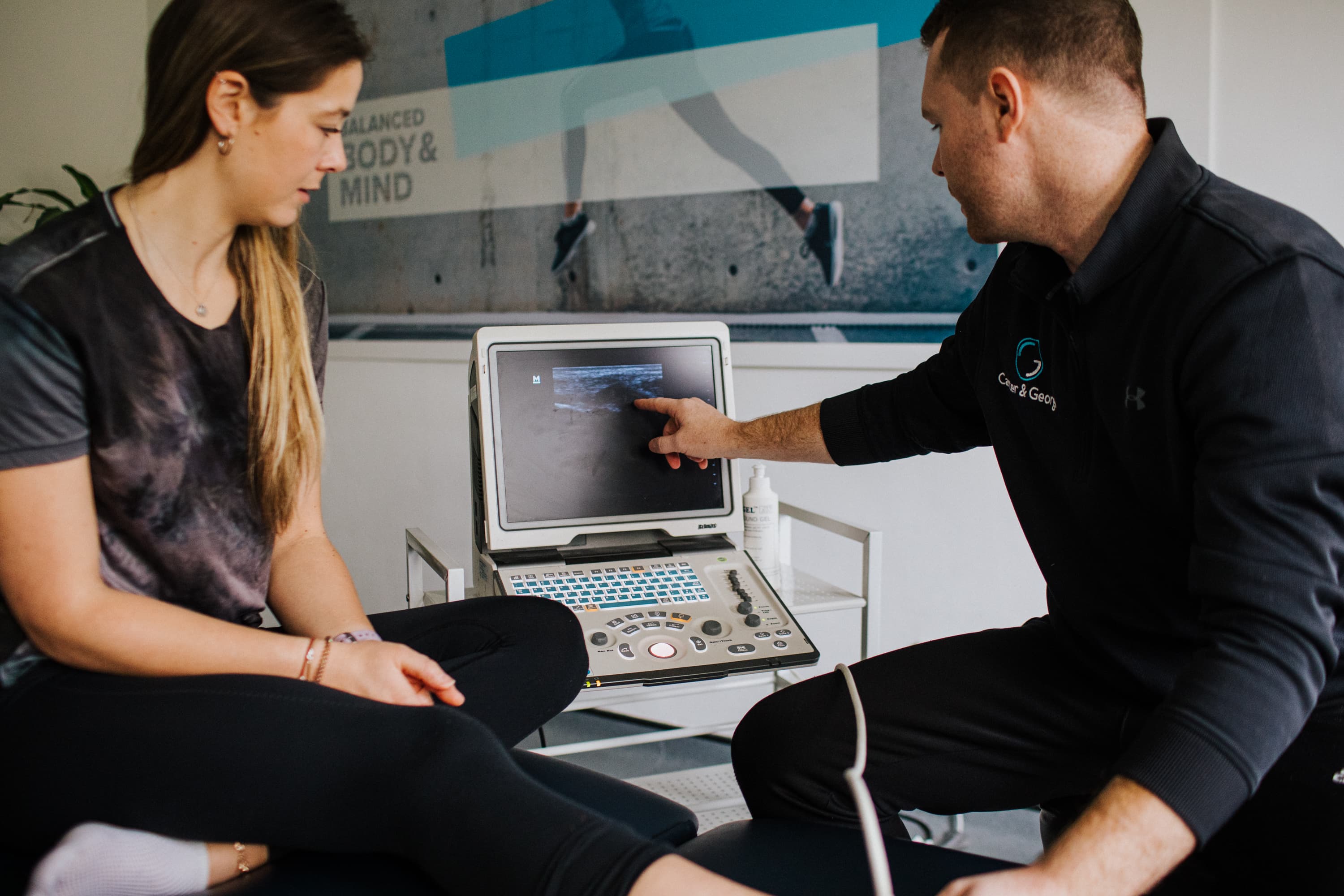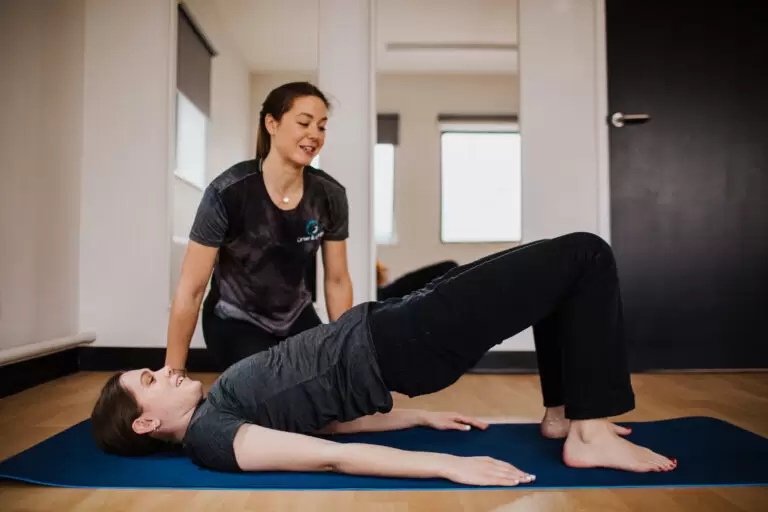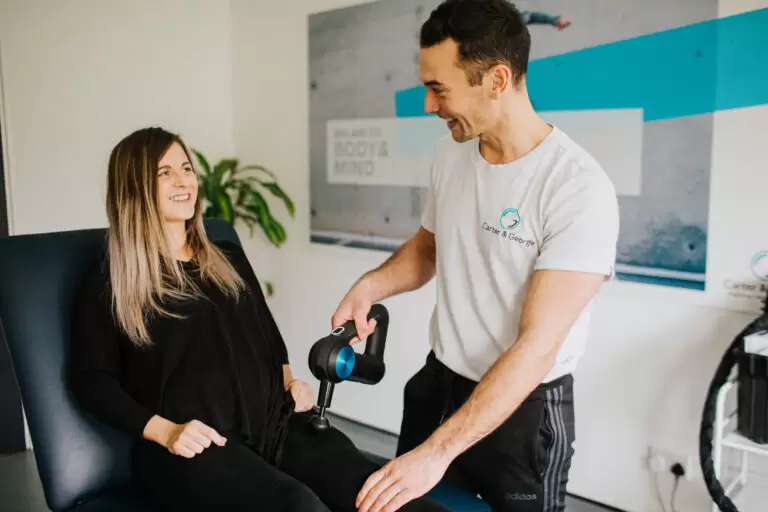Related Posts
Stay Active, Live Longer: How Exercise Can Boost Your Health After 60
As we get older, staying active becomes more important than ever. Exercise isn’t just about feeling good today it can extend your life, improve your independence, and keep you feeling strong well into your 70s, 80s, and beyond.
Chronic Fatigue and Muscle Strains – they’re not related….are they?
Find out how physiotherapy can help combat chronic fatigue according to research by Johns Hopkins University.
How Gait Analysis Can Benefit Runners
Gait Analysis is an in-depth analysis of how you move, more specifically running and walking with the ultimate goal of identifying any mechanical issues or potential risk factors for injury in a runner’s stride.
The Female Athlete – How the Menstrual Cycle Affects Injury Risk

Why has there been an increase in serious injuries amongst elite female athletes?
The recent Women’s Football World Cup and the Netball World Cup have not only been landmark events in women’s sports, showcasing immense talent and fierce competition, but they have also served to highlight an alarming trend – the rise in serious injuries among elite female athletes.
More and more female elite athletes are attending our sports injury clinic with injuries that were less common just a few years ago.
This rise in sports injuries has become a poignant issue that the sports world can no longer afford to overlook. It’s imperative to understand the root causes behind this trend, which may range from the physiological differences in female athletes, training intensity, to the very nature and physicality of the sports themselves. In light of these events, the conversation about sports injury prevention and athlete health is more relevant than ever.
The menstrual cycle can greatly affect a female athlete’s performance, and thus, it should be factored into the design of training schedules. Hormonal shifts during the menstrual cycle can impact various aspects of an athlete’s physiology, including muscle function, metabolism, and recovery.
Understanding the Female Athlete
Female athletes must meet the same physical demands and challenges as male athletes, but they also face unique obstacles due to differences in physiology.
Women tend to have a lower centre of gravity than men, relative to their height, which can change the way they move and even affect their performance. Additionally, women typically have less muscle mass than men; this can make them more prone to fatigue and sports injury.
Unique physiological aspects of female athletes significantly influence their performance, injury risk, and recovery times.
For instance, women typically have a wider pelvis than men, leading to a greater Q-angle (the angle at which the femur meets the tibia) and potentially predisposing them to certain types of sports injuries, like ACL tears.
Hormonal fluctuations throughout the menstrual cycle significantly impact their metabolic rate, muscle function, and recovery capabilities. At certain phases in the cycle, heightened levels of oestrogen and progesterone can lead to increased ligamentous laxity and muscle fatigue, respectively, which can influence performance and sports injury risk.
Women also have a higher percentage of body fat and lower lung capacity compared to men, both of which can affect endurance and overall athletic performance. Recognizing and understanding these unique physiological aspects is crucial in planning effective, individualized training and recovery strategies for female athletes.
 Female Athlete Injury Risk: A Closer Look
Female Athlete Injury Risk: A Closer Look
Female athletes often fall prey to a constellation of sports injuries due to the unique physiological challenges they face. The most common of these injuries are:
Anterior Cruciate Ligament (ACL) Tear: Female athletes are at a significantly higher risk of experiencing an ACL tear compared to their male counterparts. This is often attributable to the increased Q-angle resulting from a wider pelvis.
Stress Fractures: Due to the lower bone density compared to men, women are more susceptible to stress fractures, particularly in sports requiring repetitive impact like running or jumping.
Patellofemoral Pain Syndrome (PFPS): Also known as “runner’s knee,” this condition, characterized by pain around the kneecap, is prevalent among female athletes. It’s thought to be connected to the wider hip to knee ratio in women which puts more stress on the knees. It is a common cause of knee pain.
Shoulder Injuries: Female athletes, particularly those involved in overhead sports such as swimming or volleyball, frequently suffer from shoulder injuries. These range from rotator cuff strains to more severe conditions like shoulder instability.
Understanding these common injuries among female athletes is essential in the quest to develop effective injury prevention strategies, and to ensure the athletes’ safety and longevity in their respective sports.
The menstrual cycle’s impact on sports injury risk is an often overlooked, but crucial element in understanding and managing the health of female athletes. Hormonal fluctuation throughout the cycle significantly influences ligament laxity, muscle function, and recovery capabilities, thereby affecting both performance and injury risk.
In the following section, we delve deeper into how the menstrual cycle can be integrated into sports injury risk management strategies for female athletes.
Menstrual Cycle: An Overview
The menstrual cycle, typically ranging from 21 to 35 days, is a biological process females undergo from puberty to menopause. It encompasses four primary phases: the menstrual phase (day 1-5), the follicular phase (day 1-13), ovulation (day 14), and the luteal phase (day 15-28). These phases are characterized by fluctuations in hormone levels, primarily oestrogen and progesterone, which have significant implications for a female athlete’s performance and sports injury risk.
Important considerations to have:
During the luteal phase of the cycle, which is characterized by higher levels of progesterone, some athletes may experience increased fatigue and decreased muscle recovery.
Therefore, it could be beneficial to plan more intense training sessions for the follicular phase when oestrogen levels rise, potentially enhancing pain tolerance and muscular strength.
This personalized approach to training can enhance performance, reduce sports injury risk, and promote overall athlete health. It’s evident that understanding and integrating menstrual cycle variations into the training regimen of female athletes is a critical aspect of sports science and medicine that deserves more focus.

The Menstrual Cycle and Injury Risk: The Connection
Several research studies have drawn a connection between phases of the menstrual cycle and sports injury risk in female athletes.
For instance, a study published in the Journal of Athletic Training found that the risk of ACL tears was significantly higher during the ovulatory phase of the menstrual cycle, possibly due to the peak in oestrogen levels that can increase ligament laxity.
Another research published in the American Journal of Sports Medicine showed that female athletes were more likely to suffer from stress fractures during the luteal phase, when progesterone levels are high, leading to changes in bone turnover rates. This often led to difficult to manage hip, foot and knee pain.
Moreover, a study featured in the British Journal of Sports Medicine suggested increased incidence of shoulder injuries in female swimmers during the menstrual and follicular phases, potentially attributed to lower pain tolerance during these periods.
These findings underscore the importance of considering menstrual cycle phases in sports injury risk management strategies for female athletes.
 Mitigating Injury Risk: Strategies and Recommendations
Mitigating Injury Risk: Strategies and Recommendations
As we navigate ways to minimize injury risk among female athletes, it’s evident that monitoring menstrual cycles can be a potent preventive tool. Here are some strategies:
Menstrual Cycle Tracking: Encourage athletes to maintain a menstrual cycle logbook or utilize mobile applications designed for this purpose. By understanding their unique cycle, athletes can anticipate hormonal fluctuations and adjust their training intensity accordingly.
Injury Risk Awareness: Educate athletes about the potential increased risk of sports injury during specific menstrual cycle phases such as the ovulatory and luteal phases. This awareness can help them take extra precautions during these periods.
Personalized Training Programs: Based on the menstrual cycle, coaches can design individualized training programs. For example, scheduling high-intensity workouts during the follicular phase when oestrogen levels are high and pain tolerance and muscle strength are potentially enhanced.
Nutritional Adjustments: Nutritional interventions can help mitigate some of the effects of hormonal changes. For example, increased calcium and Vitamin D intake during the luteal phase can help counteract the potential bone density reduction due to high progesterone levels.
Rest and Recovery: An increased focus on rest and recovery during high-risk phases of the menstrual cycle is crucial. This can include practices such as yoga, meditation, sports massage and adequate sleep.
By adopting these strategies, we can create a safer, more effective training environment for female athletes, tailored to their physiological needs.
Monitoring the menstrual cycle and adapting to its changes is not just a possibility—it’s a necessity in modern sports science and medicine.
 Conclusion
Conclusion
In conclusion, the menstrual cycle is a substantial yet underappreciated factor in managing the health, performance, and injury risk of female athletes. Recognizing the hormonal fluctuations across the menstrual cycle phases and their impact on elements such as ligament laxity, muscle function, and recovery abilities, can guide personalized training and injury prevention strategies. Scientific studies have established a link between menstrual cycle phases and injury trends, urging the necessity for more focused attention in this area.
Furthermore, strategies including menstrual cycle tracking, injury risk awareness, personalized training programs, nutritional adjustments, and prioritizing rest and recovery can significantly mitigate injury risk and enhance performance. By integrating menstrual cycle considerations into sports science and medicine, we are not merely exploring a possibility but fulfilling a necessity.
Further research is required to deepen our understanding of the female athlete, specifically in the context of menstrual cycle variations and their implications for injury prevention and performance maximization. Dedicated studies are needed to explore in greater depth the exact hormonal mechanisms that link menstrual cycle phases to injury risk, as some of the current knowledge is based on correlations rather than causative proofs.
In addition, there’s an increasing necessity to research and develop comprehensive female-centric training protocols that incorporate the hormonal fluctuations throughout the menstrual cycle. This requires a multidisciplinary approach that involves not only sports scientists and physiologists, but also nutritionists and psychologists.
Another critical area for future research is the development of advanced menstrual cycle tracking technologies that could be integrated into wearable devices, allowing for real-time monitoring and immediate adjustments in training intensity and recovery strategies.
Finally, more studies are necessary to examine the impact of various nutritional interventions during different phases of the menstrual cycle, with the goal of developing evidence-based dietary guidelines for female athletes.
By addressing these areas through rigorous research, we can move towards a more nuanced understanding of the female athlete and establish effective strategies to prevent injury and maximize performance.
How can we help?
The Carter & George Practice is a distinguished sports injury clinic dedicated to providing top-tier treatment for athletes. We understand the unique needs and challenges faced by female athletes, especially in relation to their menstrual cycle and the associated injury risks.
Our team is trained to prevent these injuries through monitoring, personalized training programs, and nutritional guidance. Additionally, we are ever prepared to treat any injuries that may occur, employing a treatment plan that is safe, effective, and considerate of each athlete’s individual needs.
Our holistic approach to sports medicine ensures that female athletes can perform at their best, while promoting their overall health and wellbeing.
We have 3 state-of-the-art purpose built premises in Hertfordshire.
Services we offer:
At the Carter & George Practice, we offer a comprehensive suite of services catered towards the needs of athletes.
Physiotherapy: We provide expert physiotherapy services that help athletes recover from injuries and enhance their performance. Our physiotherapists are registered with the Chartered Society of Physiotherapy and are skilled in delivering a personalized treatment plan that caters to the athlete’s unique physiological and biomechanical needs.
Sports Massage: Our sports massage services are designed to alleviate muscle tension, increase flexibility, and promote faster recovery. By targeting specific areas of tension or injury, our sports massages can provide significant relief and improvement in athletic performance.
Strength & Conditioning: We offer strength and conditioning programs that are individually tailored to support an athlete’s goals. These programs are designed to build strength, enhance agility, and improve endurance, contributing to improved performance and injury prevention.
Nutritional Support: Recognizing the vital role nutrition plays in performance and recovery, we offer nutritional support and guidance. Our nutrition specialists can create individualized dietary plans that align with the athlete’s training regimen and physiological needs during different menstrual cycle phases.
Testing Services: We offer a range of testing services, including body composition analysis, fitness assessments, and metabolic analysis. These services enable us to track an athlete’s progress, adjust their training program as necessary, and ensure optimal performance in their chosen sports.
Each of these services forms a key component of our holistic approach to sports medicine, allowing us to support female athletes in achieving their best performance while minimizing sports injury risk.